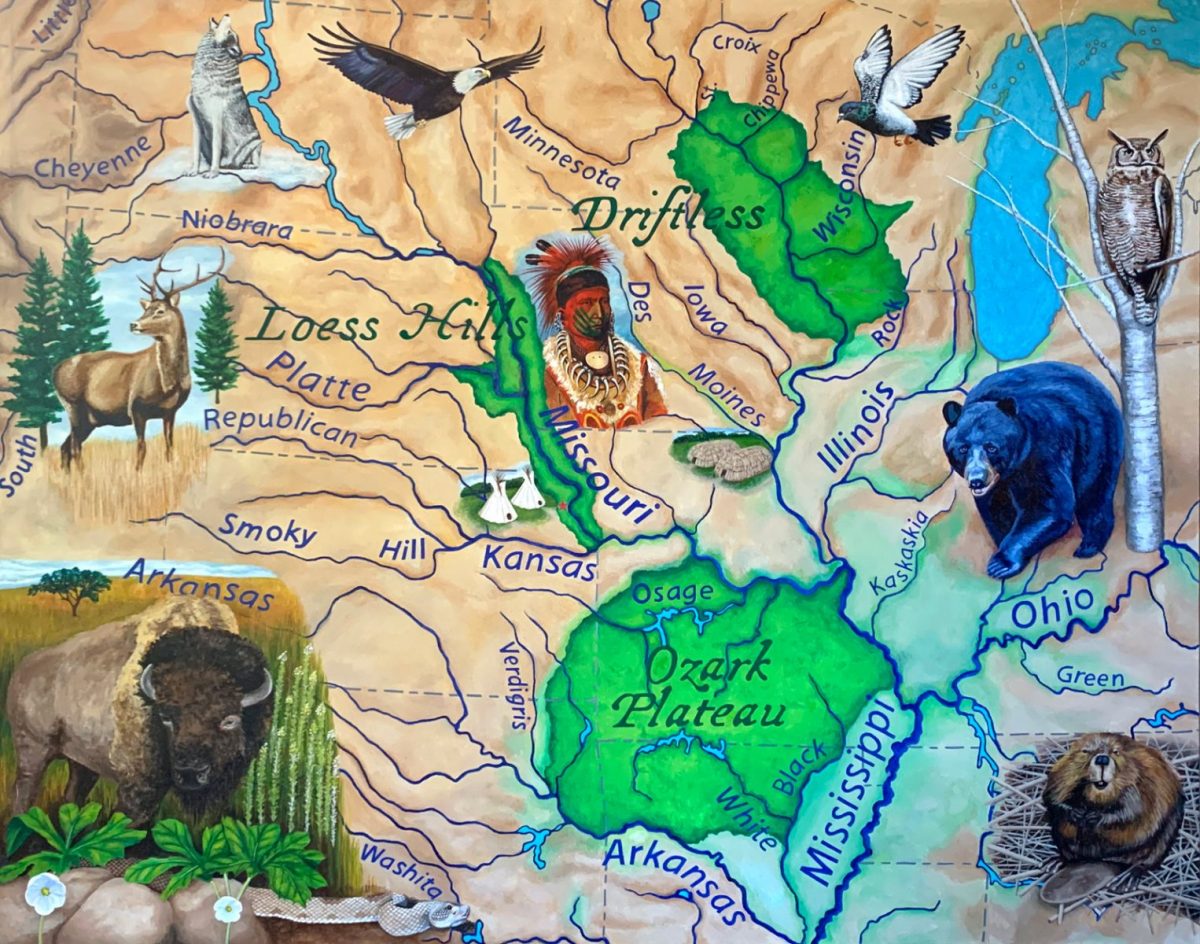by Sydney Jane Brooke Campbell Maybrier Pursel
For hundreds of years Ioway Indians camped along the rivers and hunted in the prairies in the places that now bare their name. The State of Iowa, the Iowa River, and the Upper Iowa River, are three places named due to the presence of Ioway people. Other rivers in the region were named from Ioway words. Yet, the Ioway people have little presence there today. As settlers encroached on their territory the Ioway began a series of negotiations and treaties with the U.S. government starting in the early 1800’s. Over the course of 50 years, the Ioway lost all of their ancestral homeland and were removed to two reservations, one on the border of Kansas and Nebraska and one in Oklahoma.
The coming together and splitting of peoples is not new to the Ioway or other tribes. According to tribal tradition, the clans came from various places including the Great Lakes, western prairies, and eastern woodland to form the People. Each clanbrought something specific to offer the group.
Bear: Pipe (brought the clans together and led the tribe in fall and winter)
Buffalo: Corn and other crops (led the tribe during spring and summer)
Thunder/Eagle: War(led the tribes in times of conflict)
Snake: Village (laid out the village site and made peace with the snakes)
Beaver: Shelter(taught how to make earth lodges and pipestems)
Elk: Fire (attended the sacred fire)
Wolf: Bow and arrow (kept watch)
Owl: Medicine (kept special medicines and powers)
Pigeon: Peace (kept the peace)
Known collectively as the Oneota, they also called the rivers, prairies, and woodlands of present-day Iowa their home. But in the 1600’s, advancing settlers, trade relationships, and disease split the Oneota into smaller Nations. These nations dispersed and became the Ioway, Otoe, Ho-chunk, Missouria, Omaha, Ponca, Kansa, Quapaw, and Osage.
Iowa has changed a lot since the time when the Ioway and their Oneota ancestors roamed freely there. What was once truly WILD is now controlled by agricultural production and urban cities. As an Ioway tribal woman, I care about this land and the work that BeWild ReWild is doing to advocate for it. The three areas they focus on are depicted in this painting: the Loess Hills, Ozark Plateau, and Driftless areas surrounded by the clan animals. Very few of these animals roam freely between these areas now. As habitats are lost due to human interference and destruction, many animals seek refuge on or near the waterways and use them like highways to travel from one of these areas to others. Like veins in the human body, rivers provide blood to the earth. Growing and protecting these areas (known as cores) and the water highways (known as corridors) is imperative to the survival of our plant, animal, and human relatives.Ñi ix^án aré ke (Water is Life) imagines a diversity of wildlife existing in the Mississippi Watershed again.


